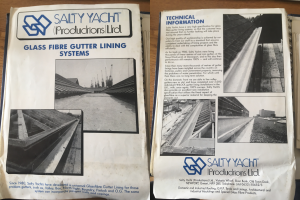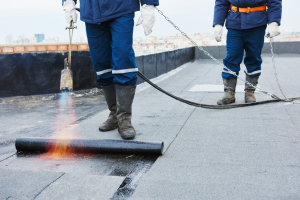
We love the pliability of a flat roof sure as shooting style limitations, however, they need a touch of a name for leaks and repairs. Of course, flat roofs don’t seem to flat however have a really slight roof pitch of between 1/4″ to 1/2″ per foot. simply enough slope to empty water however additionally flat enough to be a retardant if not created properly.

The good news is that there area unit material choices for your flat roof on the far side ancient hot-mopped settled roofing which will increase the dependableness of the flat roof. flat roofing bristol is popular for flat roofing.
Let’s review the foremost common classes of flat roof materials offered for your home:
- Single-layer membrane roof
- Modified hydrocarbon roof
- Built-up roof (BUR)
- Single Layer Membrane Roof
The membrane roof is the latest roofing technology and is additionally the roof of alternative in industrial construction. familiar technically as elastomeric or elastomeric roof membrane (depending on the material), single-ply roofs are available in a couple of totally different varieties including:
- Neoprene (polychloroprene)
- EPDM (ethylene propene diene monomer)
- PVC (polyvinyl chloride)
- Chlorinated polythene and chloro sulfonated polythene sheets
- Polymer-modified bitumens
Of these membrane sorts EPDM, caoutchouc is that the commonest single-ply membrane roof material in each residential and industrial use. thus all you wish to be ready to advise your roof contractor is you wish Associate in Nursing EPDM rubber roof.
These roofs area units put in as skinny sheet materials zero.030 (30 mils) to zero.060 inches (60 mils) thick and area unit applied to the roof in a very single layer. Being a product of caoutchouc or chemical compound, they’re versatile and elastic and may handle temperature changes and a few impact sorts higher than settled roofs.
Membrane roofs area unit hooked up in a very type of way in which. they will be partly loose set and control down with watercourse rock ballast (requires roof structure to support the weight) or totally adhered to the roof deck. EPDM and synthetic rubber roof seams area unit mounted by adhesive and PVC roof seams area unit heat or solvent welded.
Modified hydrocarbon Roofing
Modified hydrocarbon cap sheet roofing was developed within the Nineteen Sixties as a replacement technology for BUR, or settled roofing, by victimization the well-tried technology of BUR however additionally adding chemical compound strengthened roof wear layers or cap sheets.
These roofs are often put in victimization any range of techniques that area unit determined by the project’s specific needs and material such. These installation ways include:
- Hot applied
- Torch applied
- Cold applied
- Self-adhered
The chemical compound employed in the cap sheet provides improved snap and suppleness in lower temperatures. the foremost ordinarily used polymers area unit neurological disease plastic (APP) and phenylethylene hydrocarbon phenylethylene (SBS). SBS imparts a rubber-like characteristic to the hydrocarbon.
SBS cap sheets area unit sometimes put in victimization cold adhesives or hot asphalt tar. Thermoplastic APP sheets, on the opposite hand, area unit put in victimization the torch applied technique.
Built-Up Roofing
Built-up roofs area unit put in victimization many layers of a special style of roofing felt that has been asphalt fertilized and embedded in hydrocarbon applied with a hot mop.
The hot-applied asphalt or pitch blends with the hydrocarbon soaked roof felt and create a monolithic roof membrane. The roof felt/asphalt tar layering is continual in overlapping layers till the assembly is 2 to four plies in thickness.
A wear surface of finely crushed stone granules is sometimes applied to the highest layer of hot tar to safeguard the settled roof assembly from ultraviolet {light|ultraviolet illumination|UV|actinic radiation|actinic ray} light and weather.
